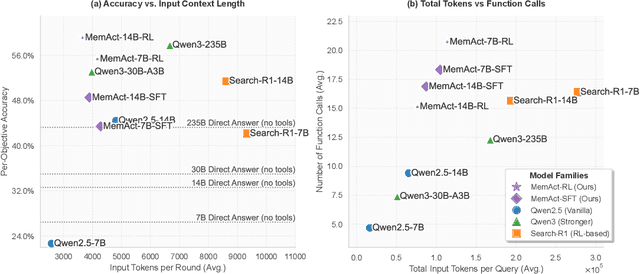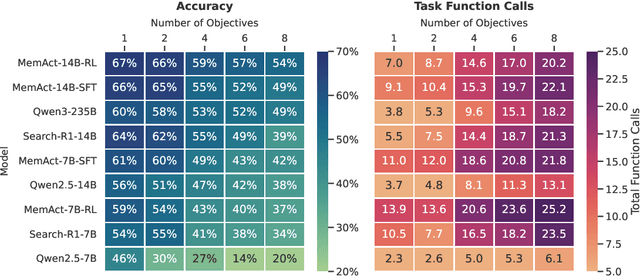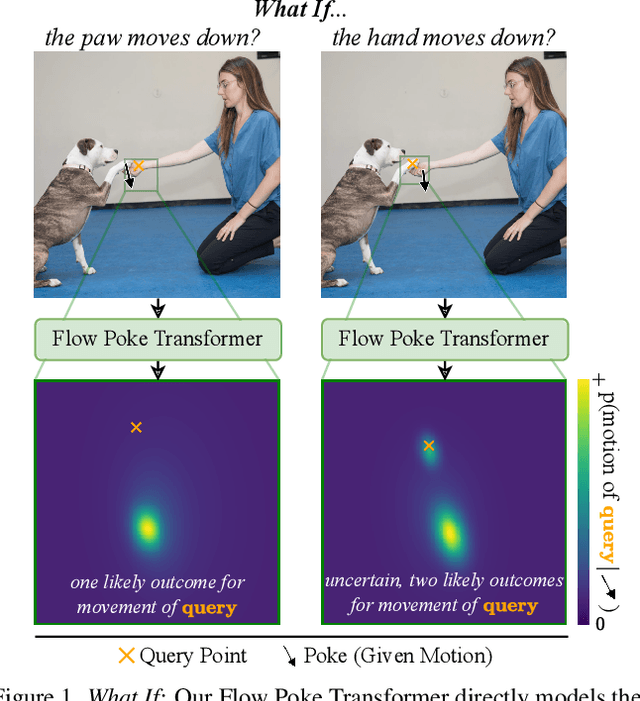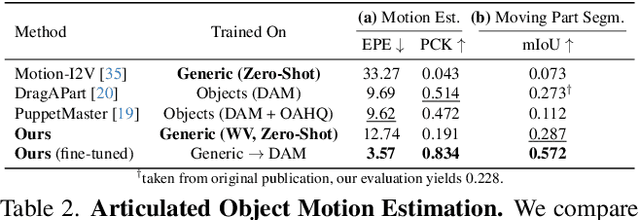Interactive Segmentation
Interactive segmentation is the process of refining or correcting segmentation results with user input or guidance.
Papers and Code
Context-Gated Cross-Modal Perception with Visual Mamba for PET-CT Lung Tumor Segmentation
Oct 31, 2025Accurate lung tumor segmentation is vital for improving diagnosis and treatment planning, and effectively combining anatomical and functional information from PET and CT remains a major challenge. In this study, we propose vMambaX, a lightweight multimodal framework integrating PET and CT scan images through a Context-Gated Cross-Modal Perception Module (CGM). Built on the Visual Mamba architecture, vMambaX adaptively enhances inter-modality feature interaction, emphasizing informative regions while suppressing noise. Evaluated on the PCLT20K dataset, the model outperforms baseline models while maintaining lower computational complexity. These results highlight the effectiveness of adaptive cross-modal gating for multimodal tumor segmentation and demonstrate the potential of vMambaX as an efficient and scalable framework for advanced lung cancer analysis. The code is available at https://github.com/arco-group/vMambaX.
Fine-tuning Segment Anything for Real-Time Tumor Tracking in Cine-MRI
Oct 29, 2025In this work, we address the TrackRAD2025 challenge of real-time tumor tracking in cine-MRI sequences of the thoracic and abdominal regions under strong data scarcity constraints. Two complementary strategies were explored: (i) unsupervised registration with the IMPACT similarity metric and (ii) foundation model-based segmentation leveraging SAM 2.1 and its recent variants through prompt-based interaction. Due to the one-second runtime constraint, the SAM-based method was ultimately selected. The final configuration used SAM2.1 b+ with mask-based prompts from the first annotated slice, fine-tuned solely on the small labeled subset from TrackRAD2025. Training was configured to minimize overfitting, using 1024x1024 patches (batch size 1), standard augmentations, and a balanced Dice + IoU loss. A low uniform learning rate (0.0001) was applied to all modules (prompt encoder, decoder, Hiera backbone) to preserve generalization while adapting to annotator-specific styles. Training lasted 300 epochs (~12h on RTX A6000, 48GB). The same inference strategy was consistently applied across all anatomical sites and MRI field strengths. Test-time augmentation was considered but ultimately discarded due to negligible performance gains. The final model was selected based on the highest Dice Similarity Coefficient achieved on the validation set after fine-tuning. On the hidden test set, the model reached a Dice score of 0.8794, ranking 6th overall in the TrackRAD2025 challenge. These results highlight the strong potential of foundation models for accurate and real-time tumor tracking in MRI-guided radiotherapy.
SPG-CDENet: Spatial Prior-Guided Cross Dual Encoder Network for Multi-Organ Segmentation
Oct 30, 2025Multi-organ segmentation is a critical task in computer-aided diagnosis. While recent deep learning methods have achieved remarkable success in image segmentation, huge variations in organ size and shape challenge their effectiveness in multi-organ segmentation. To address these challenges, we propose a Spatial Prior-Guided Cross Dual Encoder Network (SPG-CDENet), a novel two-stage segmentation paradigm designed to improve multi-organ segmentation accuracy. Our SPG-CDENet consists of two key components: a spatial prior network and a cross dual encoder network. The prior network generates coarse localization maps that delineate the approximate ROI, serving as spatial guidance for the dual encoder network. The cross dual encoder network comprises four essential components: a global encoder, a local encoder, a symmetric cross-attention module, and a flow-based decoder. The global encoder captures global semantic features from the entire image, while the local encoder focuses on features from the prior network. To enhance the interaction between the global and local encoders, a symmetric cross-attention module is proposed across all layers of the encoders to fuse and refine features. Furthermore, the flow-based decoder directly propagates high-level semantic features from the final encoder layer to all decoder layers, maximizing feature preservation and utilization. Extensive qualitative and quantitative experiments on two public datasets demonstrate the superior performance of SPG-CDENet compared to existing segmentation methods. Furthermore, ablation studies further validate the effectiveness of the proposed modules in improving segmentation accuracy.
A methodology for clinically driven interactive segmentation evaluation
Oct 10, 2025Interactive segmentation is a promising strategy for building robust, generalisable algorithms for volumetric medical image segmentation. However, inconsistent and clinically unrealistic evaluation hinders fair comparison and misrepresents real-world performance. We propose a clinically grounded methodology for defining evaluation tasks and metrics, and built a software framework for constructing standardised evaluation pipelines. We evaluate state-of-the-art algorithms across heterogeneous and complex tasks and observe that (i) minimising information loss when processing user interactions is critical for model robustness, (ii) adaptive-zooming mechanisms boost robustness and speed convergence, (iii) performance drops if validation prompting behaviour/budgets differ from training, (iv) 2D methods perform well with slab-like images and coarse targets, but 3D context helps with large or irregularly shaped targets, (v) performance of non-medical-domain models (e.g. SAM2) degrades with poor contrast and complex shapes.
VADTree: Explainable Training-Free Video Anomaly Detection via Hierarchical Granularity-Aware Tree
Oct 26, 2025Video anomaly detection (VAD) focuses on identifying anomalies in videos. Supervised methods demand substantial in-domain training data and fail to deliver clear explanations for anomalies. In contrast, training-free methods leverage the knowledge reserves and language interactivity of large pre-trained models to detect anomalies. However, the current fixed-length temporal window sampling approaches struggle to accurately capture anomalies with varying temporal spans. Therefore, we propose VADTree that utilizes a Hierarchical Granularityaware Tree (HGTree) structure for flexible sampling in VAD. VADTree leverages the knowledge embedded in a pre-trained Generic Event Boundary Detection (GEBD) model to characterize potential anomaly event boundaries. Specifically, VADTree decomposes the video into generic event nodes based on boundary confidence, and performs adaptive coarse-fine hierarchical structuring and redundancy removal to construct the HGTree. Then, the multi-dimensional priors are injected into the visual language models (VLMs) to enhance the node-wise anomaly perception, and anomaly reasoning for generic event nodes is achieved via large language models (LLMs). Finally, an inter-cluster node correlation method is used to integrate the multi-granularity anomaly scores. Extensive experiments on three challenging datasets demonstrate that VADTree achieves state-of-the-art performance in training-free settings while drastically reducing the number of sampled video segments. The code will be available at https://github.com/wenlongli10/VADTree.
cubic: CUDA-accelerated 3D Bioimage Computing
Oct 15, 2025Quantitative analysis of multidimensional biological images is useful for understanding complex cellular phenotypes and accelerating advances in biomedical research. As modern microscopy generates ever-larger 2D and 3D datasets, existing computational approaches are increasingly limited by their scalability, efficiency, and integration with modern scientific computing workflows. Existing bioimage analysis tools often lack application programmable interfaces (APIs), do not support graphics processing unit (GPU) acceleration, lack broad 3D image processing capabilities, and/or have poor interoperability for compute-heavy workflows. Here, we introduce cubic, an open-source Python library that addresses these challenges by augmenting widely used SciPy and scikit-image APIs with GPU-accelerated alternatives from CuPy and RAPIDS cuCIM. cubic's API is device-agnostic and dispatches operations to GPU when data reside on the device and otherwise executes on CPU, seamlessly accelerating a broad range of image processing routines. This approach enables GPU acceleration of existing bioimage analysis workflows, from preprocessing to segmentation and feature extraction for 2D and 3D data. We evaluate cubic both by benchmarking individual operations and by reproducing existing deconvolution and segmentation pipelines, achieving substantial speedups while maintaining algorithmic fidelity. These advances establish a robust foundation for scalable, reproducible bioimage analysis that integrates with the broader Python scientific computing ecosystem, including other GPU-accelerated methods, enabling both interactive exploration and automated high-throughput analysis workflows. cubic is openly available at https://github$.$com/alxndrkalinin/cubic
Memory as Action: Autonomous Context Curation for Long-Horizon Agentic Tasks
Oct 14, 2025



Large Language Models face challenges in long-horizon agentic tasks as their constrained memory is easily overwhelmed by distracting or irrelevant context. Existing working memory methods typically rely on external, heuristic mechanisms that are decoupled from the agent's core policy. In this work, we reframe working memory management as a learnable, intrinsic capability. We propose a novel framework, Memory-as-Action, where an agent actively manages its working memory by executing explicit editing operations as part of a unified policy. This formulation allows an agent, trained via reinforcement learning, to balance memory curation against long-term task objectives under given resource constraints. However, such memory editing actions break the standard assumption of a continuously growing prefix in LLM interactions, leading to what we call trajectory fractures. These non-prefix changes disrupt the causal continuity required by standard policy gradient methods, making those methods inapplicable. To address this, we propose a new algorithm, Dynamic Context Policy Optimization, which enables stable end-to-end reinforcement learning by segmenting trajectories at memory action points and applying trajectory-level advantages to the resulting action segments. Our results demonstrate that jointly optimizing for task reasoning and memory management in an end-to-end fashion not only reduces overall computational consumption but also improves task performance, driven by adaptive context curation strategies tailored to the model's intrinsic capabilities.
What If : Understanding Motion Through Sparse Interactions
Oct 14, 2025



Understanding the dynamics of a physical scene involves reasoning about the diverse ways it can potentially change, especially as a result of local interactions. We present the Flow Poke Transformer (FPT), a novel framework for directly predicting the distribution of local motion, conditioned on sparse interactions termed "pokes". Unlike traditional methods that typically only enable dense sampling of a single realization of scene dynamics, FPT provides an interpretable directly accessible representation of multi-modal scene motion, its dependency on physical interactions and the inherent uncertainties of scene dynamics. We also evaluate our model on several downstream tasks to enable comparisons with prior methods and highlight the flexibility of our approach. On dense face motion generation, our generic pre-trained model surpasses specialized baselines. FPT can be fine-tuned in strongly out-of-distribution tasks such as synthetic datasets to enable significant improvements over in-domain methods in articulated object motion estimation. Additionally, predicting explicit motion distributions directly enables our method to achieve competitive performance on tasks like moving part segmentation from pokes which further demonstrates the versatility of our FPT. Code and models are publicly available at https://compvis.github.io/flow-poke-transformer.
ChartAgent: A Multimodal Agent for Visually Grounded Reasoning in Complex Chart Question Answering
Oct 06, 2025Recent multimodal LLMs have shown promise in chart-based visual question answering, but their performance declines sharply on unannotated charts, those requiring precise visual interpretation rather than relying on textual shortcuts. To address this, we introduce ChartAgent, a novel agentic framework that explicitly performs visual reasoning directly within the chart's spatial domain. Unlike textual chain-of-thought reasoning, ChartAgent iteratively decomposes queries into visual subtasks and actively manipulates and interacts with chart images through specialized actions such as drawing annotations, cropping regions (e.g., segmenting pie slices, isolating bars), and localizing axes, using a library of chart-specific vision tools to fulfill each subtask. This iterative reasoning process closely mirrors human cognitive strategies for chart comprehension. ChartAgent achieves state-of-the-art accuracy on the ChartBench and ChartX benchmarks, surpassing prior methods by up to 16.07% absolute gain overall and 17.31% on unannotated, numerically intensive queries. Furthermore, our analyses show that ChartAgent is (a) effective across diverse chart types, (b) achieve the highest scores across varying visual and reasoning complexity levels, and (c) serves as a plug-and-play framework that boosts performance across diverse underlying LLMs. Our work is among the first to demonstrate visually grounded reasoning for chart understanding using tool-augmented multimodal agents.
VIRTUE: Visual-Interactive Text-Image Universal Embedder
Oct 01, 2025Multimodal representation learning models have demonstrated successful operation across complex tasks, and the integration of vision-language models (VLMs) has further enabled embedding models with instruction-following capabilities. However, existing embedding models lack visual-interactive capabilities to specify regions of interest from users (e.g., point, bounding box, mask), which have been explored in generative models to broaden their human-interactive applicability. Equipping embedding models with visual interactions not only would unlock new applications with localized grounding of user intent, which remains unexplored, but also enable the models to learn entity-level information within images to complement their global representations for conventional embedding tasks. In this paper, we propose a novel Visual-InteRactive Text-Image Universal Embedder (VIRTUE) that extends the capabilities of the segmentation model and the vision-language model to the realm of representation learning. In VIRTUE, the segmentation model can process visual prompts that pinpoint specific regions within an image, thereby enabling the embedder to handle complex and ambiguous scenarios more precisely. To evaluate the visual-interaction ability of VIRTUE, we introduce a large-scale Segmentation-and-Scene Caption Retrieval (SCaR) benchmark comprising 1M samples that aims to retrieve the text caption by jointly considering the entity with a specific object and image scene. VIRTUE consistently achieves a state-of-the-art performance with significant improvements across 36 universal MMEB (3.1%-8.5%) and five visual-interactive SCaR (15.2%-20.3%) tasks.
 Add to Chrome
Add to Chrome Add to Firefox
Add to Firefox Add to Edge
Add to Edge